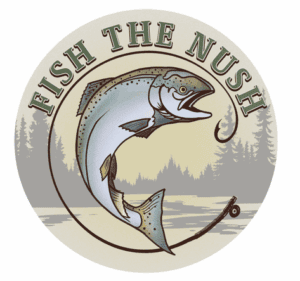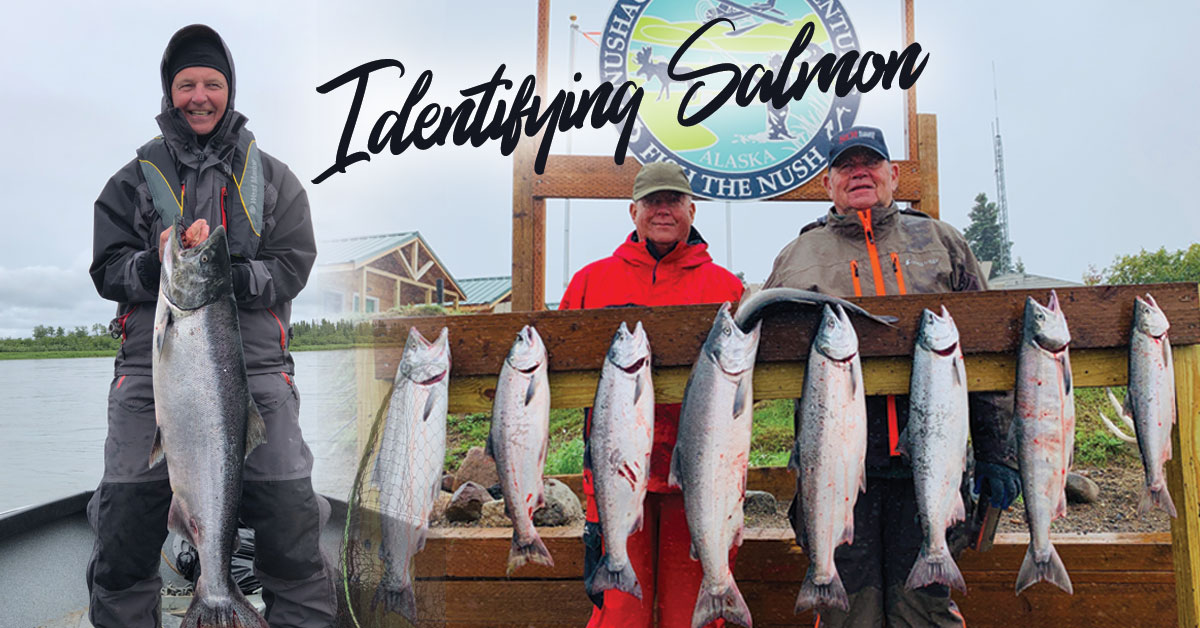Types of Salmon: How to Tell Kings and Silvers Apart
Types of salmon in Alaska include Chinook, coho, sockeye, chum and humpies. It’s important to know how to identify each as a salmon angler. Chinook (kings) and coho (silvers) are the two most-popular gamefish we target on the Nushagak and we have them both in abundance.
Salmon go through seven life-cycle stages. We engage salmon as anglers when they are in the adult stage and at the very beginning of their spawning stage. The adult stage is when salmon enter freshwater from saltwater, while the spawning stage occurs after they’ve been in the river for a spell. Their bodies begin to deteriorate and change as they journey up their natal river in search of spawning grounds, some to the exact same location they were born.
7 Ways to tell kings and silvers apart in the ocean phase:
• Mouth
• Size
• Spots
• Scales
• Fins and Tail
• Caudal Peduncle
• The Fight
1. Mouth
If the mouth on a salmon is black inside, including along the gum line, it’s a king. Silvers have black mouths with white or gray gums. This is the most accurate identifier, whereas some of the characteristics described below are generally accepted but can sometimes appear in other species.
2. Size
It’s common knowledge that kings are larger than silvers, especially in certain drainages, but a small king and a huge silver might not be so obvious. On the Nushagak we see kings from about 15- to 20 pounds on average and silvers between 8- and 10 pounds. A trophy-sized king reaches about 30 pounds and stretches over 40 inches in this watershed. A monster-sized silver could top 15 pounds.
3. Spots
Kings usually have spots that run down their back and carry down their sides closer to their lateral line and also on both lobes of the tail. For silvers, spots often appear down their back and often a few on the upper lobe of the tail, although occasionally they try to trick you with spots on the upper and lower parts of the tail.
4. Scales
When silvers are fresh into the river scales fall off easily, much more than kings. As they are in the river long enough their scales begin to harden.
5. Fins and Tails
Coho fins and tails can have white around the edges while Chinook do not. Coho can also have streaks of silver threaded lengthwise on their tails.
6. Caudal Peduncle
Say what? This is the tapering section on a salmon between their anal fin and tail. Kings have narrower caudal peduncles than silvers.
7. Fight
You get a king on and you’ll know it from the head shakes and the hunker-down mentality we’ve all recently grown accustomed to. But like those of us over this quarantine business, silvers leap out of the water in a show of freedom.
Not all of these attributes will appear every time in every salmon, but being able to identify a few of the items on this list of 8 ocean phase traits will help you differentiate between the species.
How to tell kings and silvers apart in the spawning phase:
• Red stripe
• Kype
Red Stripe (Not the Jamaican beer, mon).
Spawning salmon start to develop a red stripe down their side. Kings can turn maroon or olive brown, while silvers can become a deep maroon and their backs turn dark.
Kype
If it’s a male silver salmon in spawn, you’ll know from the distinctive hook nose that develops although this can get tricky because a hook nose can develop with sexual maturity in all of the salmon species.
Red coloring and a full hook nose on a salmon is cool to see but fish at this stage do not make good table fare. The ethical angling response is not to target fish very long into spawning and conscientiously avoid their spawning beds. Since salmon seasons can overlap it’s important to be able to identify what you’ve got. It’s those chrome salmon we are after, and whether they want to hunker down or break the surface, we love them all.

